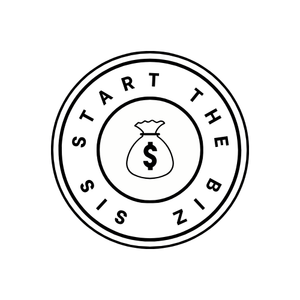How to Define Your Ideal Customer in 5 Easy Steps
When it comes to running a successful business, one of the most important things you can do is clearly define your ideal customer. Without a clear understanding of who you’re trying to serve, your marketing efforts can feel like you’re throwing spaghetti at the wall, hoping something sticks.
The truth is, knowing your ideal customer is the foundation for creating products, crafting offers, and marketing in a way that resonates. If you’ve been struggling to attract the right audience or convert leads into sales, it’s time to get back to basics.
Here’s how you can define your ideal customer in just 5 simple steps:
Step 1: Identify the Demographics
Start with the basics: who are they?
Ask yourself these questions:
- What is their age range?
- What is their gender?
- What’s their marital status or family dynamic?
- What’s their profession or industry?
- Where do they live—urban, suburban, or rural?
Why it matters: These details paint a picture of your audience and help you understand their daily lives. For example, a 25-year-old single professional in a big city has different needs than a 40-year-old working mom in the suburbs.
Step 2: Understand Their Psychographics
Go beyond the surface and dig into what makes them tick.
Consider these factors:
- What are their goals and dreams?
- What do they value most? (e.g., quality, convenience, affordability)
- What hobbies or interests do they have?
- What motivates them to take action?
Why it matters: Understanding your ideal customer’s mindset allows you to connect on a deeper level. When your messaging aligns with their values, you build trust and loyalty.
Step 3: Identify Their Pain Points
What problems are keeping your ideal customer up at night?
Ask yourself:
- What challenges or frustrations are they experiencing?
- What do they worry about the most?
- What problem can your product or service solve for them?
Why it matters: Customers buy solutions, not products. When you can clearly articulate their pain points and how you solve them, you position yourself as the go-to expert they’ve been looking for.
Step 4: Explore Their Buying Behavior
Now that you know who they are and what they need, think about how they shop.
Key questions to consider:
- Where do they go for information? (e.g., social media, Google, word of mouth)
- Are they price-sensitive, or do they value quality over cost?
- Do they prefer convenience or a hands-on experience?
- What influences their buying decisions? (e.g., reviews, testimonials, recommendations)
Why it matters: Understanding their buying habits helps you create a sales process that aligns with their preferences, making it easier for them to say “yes.”
Step 5: Craft Your Messaging
Finally, think about how you’ll communicate with them.
Focus on these areas:
- What tone of voice will resonate? (e.g., professional, friendly, empowering)
- What words or phrases speak directly to their needs?
- What objections might they have, and how can you address them?
Why it matters: Your messaging is the bridge between their problem and your solution. Speak their language, address their concerns, and show them the transformation your business can offer.
Bringing It All Together
Here’s an example of an ideal customer profile based on these steps:
- Name: Savvy Sara
- Description: Sara is a 30-year-old marketing professional living in a big city. She’s busy and values convenience and quality. She’s frustrated with managing her time and wants tools to help her stay organized. She trusts recommendations from influencers and often shops online after reading reviews.
When you define your ideal customer with this level of clarity, it becomes easier to create content, launch products, and market effectively. You’re no longer speaking to “everyone”—you’re speaking directly to the people who are already looking for you.
Pro Tip: Your ideal customer may evolve as your business grows, so revisit this process every 6-12 months to ensure your strategies are still aligned.
Defining your ideal customer isn’t just a nice-to-have—it’s a must-have for any business looking to thrive. Take the time to complete these 5 steps, and you’ll not only attract the right audience but also position your business for long-term success.
Ready to start? Grab my free “Define Your Ideal Customer in 5 Steps” worksheet to make this process even easier! Download It Here










